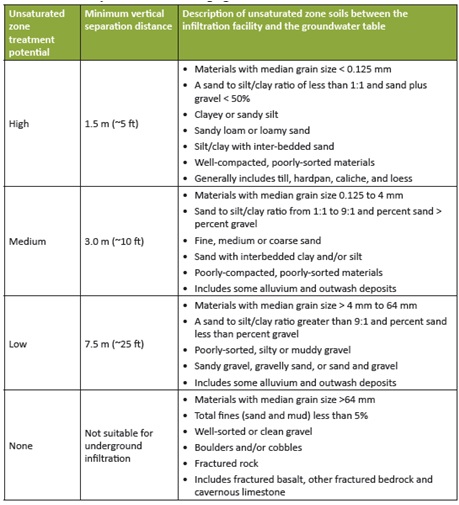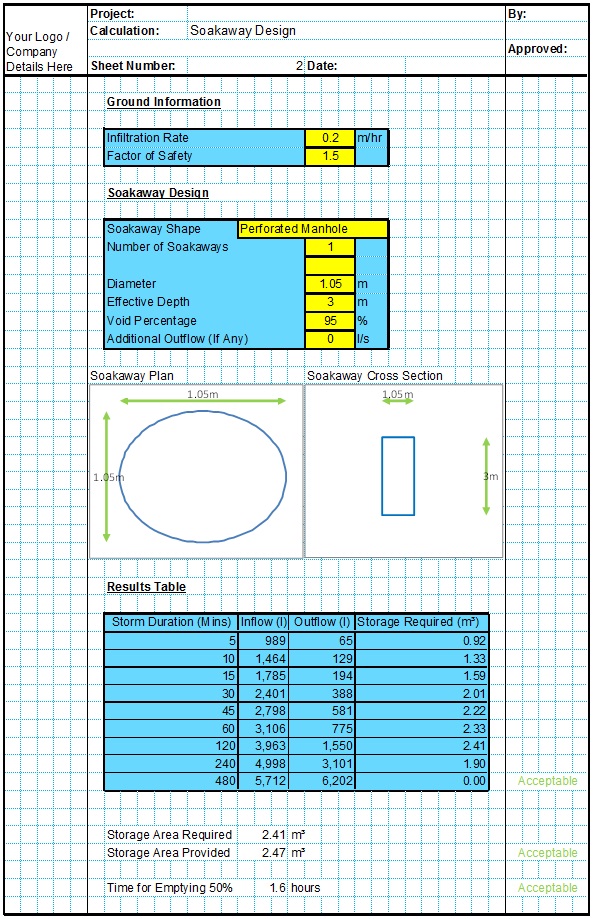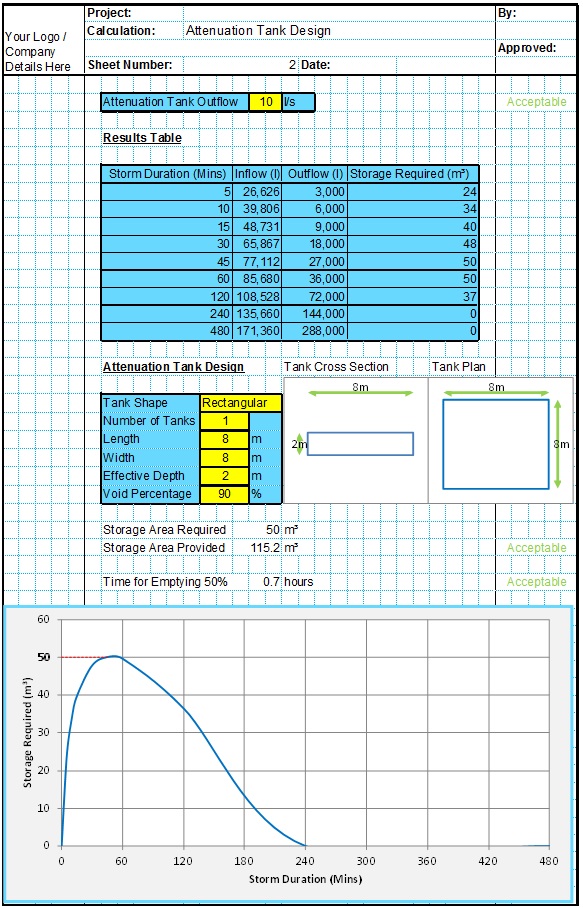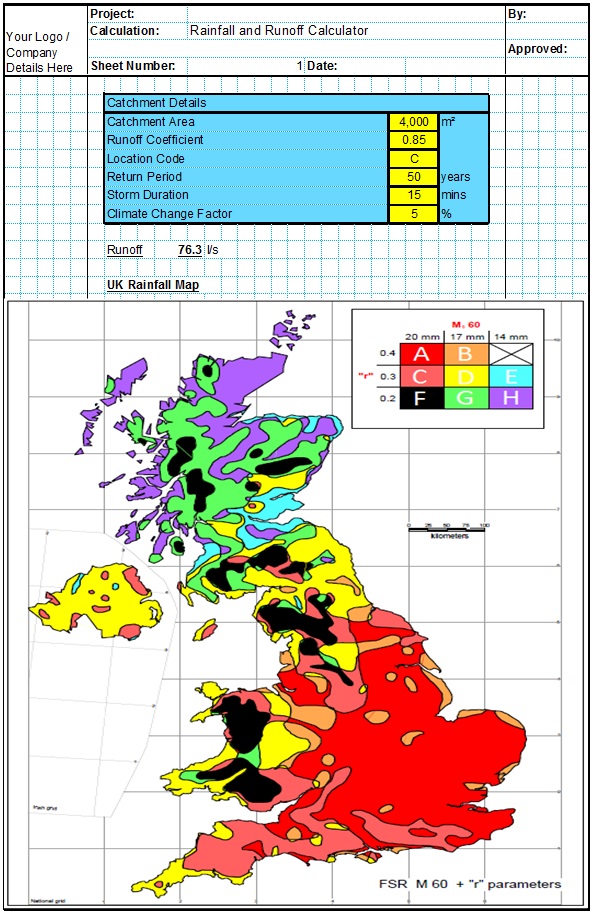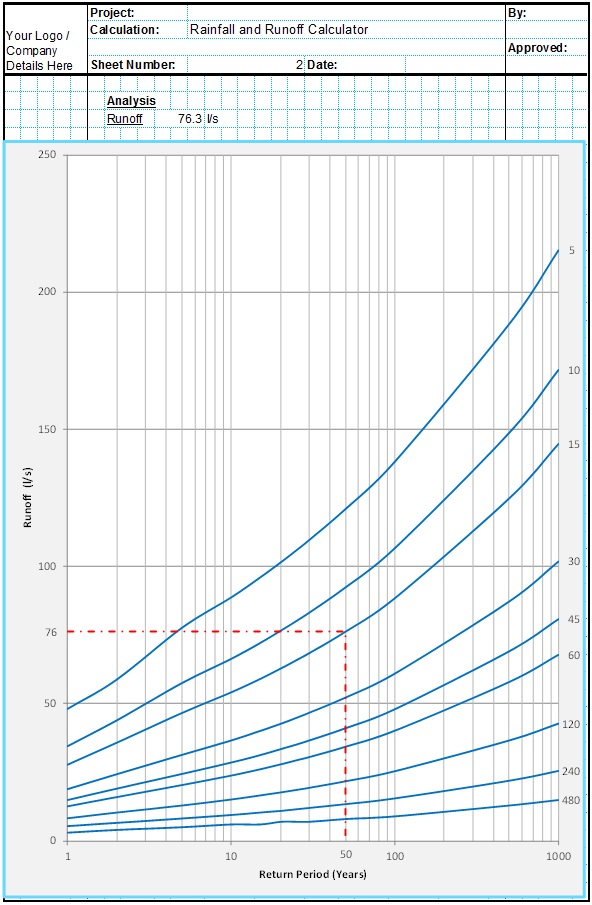The level of the existing groundwater is an important consideration when designing any soakaway. BS 8582 requires that there the base of the soakaway should be at least 1.0m above the existing groundwater level for the reasons described below.
Storage Capacity
If the groundwater level were to raise to above the level of the base of the soakaway this would lead to groundwater infiltrating into the soakaway. This would reduce the rainwater storage capacity of the soakaway and can lead to fine materials being deposited in the soakaway from the surrounding soils. This can accelerate the clogging of the soakaway.
Groundwater Contamination
If the base of the soakaway were to be inundated by the groundwater this would allow any pollution in the runoff to be discharged directly to the groundwater which is unacceptable. It is generally required that the runoff water is forced to infiltrate through at least 1.0m of soils to provide some protection to the groundwater from contaminants found in the runoff.
This requirement can be raised to above 1.0m where gravels, fractured rocks or other soils with very high infiltration rates are present. This is because soils with high infiltration rates will have a much lower ability to remove any contaminants from the runoff. Geotextiles can be used in these cases to trap some contaminants in the runoff. The distance required is dependant many factors including the characteristics of the soil, contaminants and groundwater, but the below table can be used as a guide to the treatment potential of the soil and the depth of unsaturated soil required.
This is illustrated by the below table taken from Canadian guidance.
Groundwater Effects
Where the groundwater levels are to be close to the base of the soakaway, the water infiltrating into the underlying soils can lead to a mounding effect which locally raises the groundwater levels beneath the soakaway. This should be considered where there is a risk of mounding from raising the groundwater levels to within 1.0m of the soakaway base.
In some cases the groundwater levels can be very sensitive to any additional sources of water. Water from soakaways can sometimes lead to significant raising of the groundwater levels in a particular area. This can alter the dry weather flows of nearby watercourses which can have significant effects on habitats and the rivers geomorphology. This can be particularly important near wetland habitats.
This can also affect nearby underground structures such as tanks or basements which may not have been designed to accommodate high groundwater levels.
The depth to the groundwater table can also affect the infiltration rate of the surrounding soils. So where groundwater mounding analysis has shown that the groundwater level will be raised locally in the vicinity of the soakaway, measured infiltration rates should be adjusted.
Groundwater Level Testing
It is important that the groundwater levels are measured onsite before any detailed design of the soakaway is undertaken. Where there are seasonal variations in the depth of the groundwater the highest value should be used for design. This may require for the groundwater levels to be measured twice or more often to ascertain the highest value.
On sites with high groundwater it can be possible to specify several shallow soakaways rather than one deep one. An example of this is shown below.
Infiltration trenches or basins can also be utilised at much shallower depths than a typical soakaway. In some cases other infiltration methods such as permeable pavements or swales should be considered instead of soakaways.
Construction
There would also be the potential for excavations to become inundated during construction which would lead to further issues dewatering the excavation and may compromise the stability of the excavation slopes.
Bedrock Levels
For reasons very similar to the above, the base of the soakaway should be located at least 1.0m above the level of the bedrock or from a similarly impermeable layer.
Related Spreadsheets from CivilWeb;
Soakaway Design Spreadsheet
This spreadsheet calculates the requirements for a soakaway system and assists the user to design a suitable system.
Attenuation Design Spreadsheet
This spreadsheet calculates the requirements for a attenuation system and assists the user to design a suitable system.
Runoff Calculator Spreadsheet
This spreadsheet calculates the design runoff flow for a site in accordance with the a number of different methods including the Wallingford Procedure.
Full Drainage Design Suite
Full drainage design suite (50% Discount) including 7 spreadsheets;
- Colebrook White Pipe Design
- Manning Pipe Design
- Manning Open Channel Design
- Linear Drainage Design
- Runoff Calculator
- Attenuation Design
- Soakaway Design
